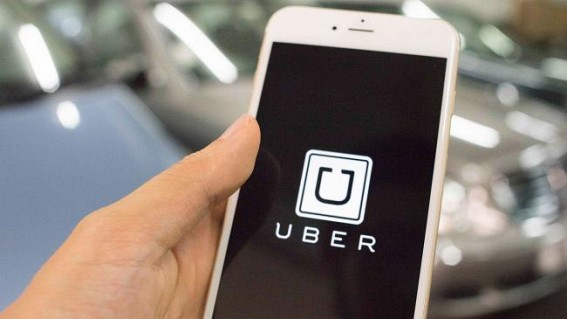TIWN

Mumbai/New Delhi: In 2016, Rajesh Raut started driving an Uber taxi in Mumbai, hoping he could earn more than the $215 he received each month for making flatbreads at a roadside stall.
He managed his car loan and home rent with ease, and sent more money than before back to his family in a village in eastern India.
But as Uber slashed incentives, Raut’s earnings dwindled swiftly. His income dropped to about $540 a month this year and he defaulted on his taxi loan payments. Deciding after an accident that he couldn’t afford to fix the vehicle, he quit Uber and now his monthly income, from a new job driving a truck, has crashed to $200.
“There is no benefit in driving for Uber ... my life was much better just as a cook,” said 26-year-old Raut.
Former Uber India executives say incentives were sharply cut in early 2017 because of growing pressure from the U.S. head office to improve financial performance ahead of an initial public offering (IPO), which values it at as much as $90 billion. Uber is set to debut on Friday on Wall Street.
In interviews in the metropolises of Mumbai, New Delhi and Bengaluru, more than 35 drivers said discontent against Uber was growing.
Mounting debt from taxi loans was a key concern. Many drivers took loans to buy cabs, while some leased cars from the companies themselves.
To be sure, many drivers from Uber are still earning more than they could get in other blue-collar jobs in India. The national minimum wage in India is only about $2.50 a day.
“It’s not that we are making a fortune, but it does give us a livelihood,” said Prakash K.C., who earns around 38,000 rupees ($548) a month driving an Uber in Bengaluru city.
Uber has acknowledged the risk of unhappiness among its drivers. “As we aim to reduce driver incentives to improve our financial performance, we expect driver dissatisfaction will generally increase,” it said in its IPO filing.
Doubling Down On India
Uber currently operates in 40 Indian cities and the country accounts for an estimated 11 per cent of its global rides.
Uber said last year it would double down on India investments after it sold its Southeast Asia business to Singapore’s Grab Holdings. Grab does not operate taxis in India.
Uber started its India operations in 2013, three years after local rival Ola launched a ride-hailing service. Both are backed by Japan’s Softbank Group Corp. Ola, which operates in 125 cities in India, last year said it plans to go public in four years.
Both gave attractive cash incentives to drivers and offered very low fares to riders when they started operations.
It wasn’t uncommon for Uber drivers to boast of monthly earnings of 100,000 rupees, which is the typical salary of a junior multinational executive in the country.
There were perks too. In a January 2017 company video, Uber drivers are seen entering a luxury hotel in Chandigarh city, where guards open their taxi doors and welcome them. Sitting and smiling with their families in a large hall with chandeliers, some of the drivers receive prizes such as an Apple iPhone, holiday package and a car.
In early 2017, the company slashed incentives by around 30 per cent overnight, said three former Uber India executives, who declined to be named.
The total incentive cut in recent years may well be far higher: research firm RedSeer Consulting estimates online taxi operators driver incentives, as a percentage of gross booking totals, fell from 60 per cent in 2015 to 18 per cent last year.
That came at a time when prices of diesel, used in many taxis in India, surged by about 30 per cent.
One of the former Uber executives told Reuters the company should have taken more care as drivers were its most important stakeholder. The decision to cut incentives sharply had disappointed several members of Uber’s India team back then, the executive added.
Lower Incentives
Last October, hundreds of drivers went on strike in Mumbai and New Delhi, demanding higher fares to meet rising fuel costs. Drivers say they ended the strike as taxi firms assured some fare concessions, but more needs to be done.
Some Uber drivers in the United States and Britain have called for a strike on Wednesday in protest against what they call low pay.
- India’s industrial growth at 3.5 pc in July signals healthy recovery: Economists
- AI to unlock $500 billion opportunity for India’s tech services: Report
- India’s credit rating upgrade to boost investors’ confidence, drive foreign capital inflows
- Centre to update WPI, IIP; announces launch of new Producer Price Index
- S&P Rating's growth projection for India is no surprise: SBI Research



